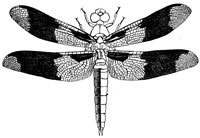Good natural history forms the foundation of almost every “broad discipline” within biology. Most of the giant names in each of our fields, and indeed the fields themselves, trace their beginnings back to natural history exploration. Providing a platform for significant natural history discoveries is the goal of Natural History Miscellany (NHM).
There are many flavors of natural history, each of which has value in its appropriate context. The American Naturalist’s mission focuses on advancing “understanding of…broad biological disciplines toward the conceptual unification of the biological sciences”. Natural history studies can play a critical role in this goal, and indeed are a major component in many regular articles in The American Naturalist. NHM are meant to be an outlet for those studies of natural history that are more concise and focused than would fit in a regular article, but that still address the journal’s mission of advancing broad disciplines or the unification thereof.
Some of the most exciting natural history offers a measure of “gee-whiz” biology. These are the studies that surprise, or just make the reader think about how cool the natural world is. Someone once described a great NHM to me as the paper you read and then walk down the hall to tell a friend about because it has such a wow factor.
To offer a bit more specific insight about what makes a paper a good candidate for NHM, here are some bullet lists:
What kind of paper is successful as a Natural History Miscellany?
- Rigorous quantitative observations that establish a clear pattern in natural populations
- Studies that illustrate a general phenomenon that is relevant to multiple taxa
- Tests of broad or a priori hypotheses
- Observations that support new hypotheses or revisions to existing ones
- Chance or opportunistic events that inform broad conceptual problems
- Creative experiments that test proposed explanations for patterns seen in nature
What work generally finds a better home elsewhere?
- Observations of a single or few occurrences of a phenomenon
- Taxonomically focused discussions
- Tests of hypotheses that are chiefly relevant to a narrow taxonomic group
- Confirmations of previously established phenomena in a new species
- Simple extensions of geographic distributions
These lists are not exhaustive, and there are, of course, exceptions and qualifications to each of these generalities. For example, information on range extensions might by synthesized to address other broader conceptual problems with wide appeal.
If you, the author, have a vision for why your natural history work is broadly interesting, and think that you can explain that vision, then consider submitting to NHM. In most cases, an editorial review takes place in a few days and you’ll have an answer about whether the work is going out to review quickly. If we think it will find a more welcoming audience at another journal, then we will convey that opinion so as to not tie the work up in the process unnecessarily.
Natural history research will continue to play an essential role in our understanding of ecology, evolution, behavior, and organismal biology. As our name implies, you should consider The American Naturalist as the place to publish your best natural history.
